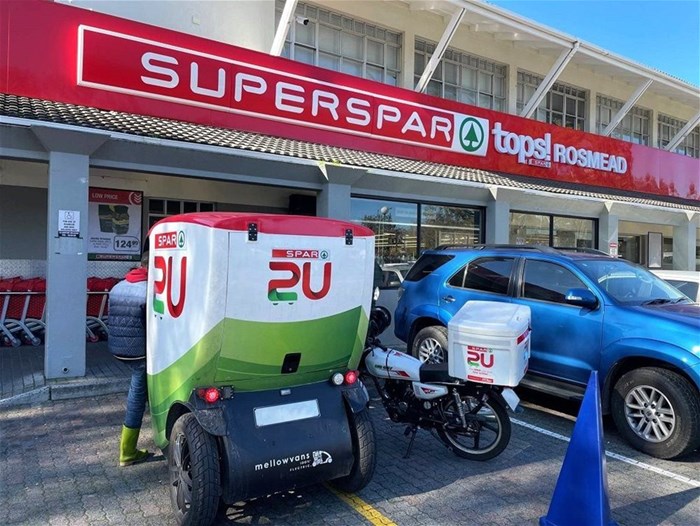It may feel like there are more grocery delivery bikes than other vehicles on the road and that there are more delivery pickers than ‘real’ shoppers in our supermarkets.

Image supplied
However, in South Africa, grocery e-commerce is still a tiny fraction of both total e-commerce and total grocery retail.
Retailers are very selective and often inconsistent about the data they share on their e-commerce efforts. Some report volume growth percentage, others value growth percentage and, though rare, others report share of total revenue.
Woolworths declares its online food sales as a percentage of its total Food turnover, but otherwise getting to an accurate market estimate is challenging.
Through its market size model, Trade Intelligence (Ti) calculated the value of the FMCG e-commerce segment to be R13.9bn in 2023, or just 1.8% of total FMCG retail.
Can it be that tiny?
The big players in grocery e-commerce (Checkers, Pick n Pay, Woolworths, Spar) are nowhere near as big as Shoprite Retail, which has only just begun to dip its toe in the e-commerce pool (i.e. with Shoprite Sixty60 and Shoprite Cash & Carry e-commerce). And neither Boxer nor Usave generates any of their significant turnovers via e-commerce.
For grocery e-commerce to hit 30% of total grocery revenue (this is the most common estimate Trade Intelligence has encountered), it would mean that every third till in every grocery store in South Africa would be processing ONLY e-commerce purchases bound for delivery by the branded motorbikes (which in turn would need to number in their dozens of thousands).
Why bother if FMCG e-commerce is so small locally?
Due to its growth. Ti’s R13.9bn estimate factored in +44.1% year-on-year growth – a significant number. And while growth rates have already started moderating as the market ‘matures’ (although Checkers Sixty60, the ‘pioneer’ of local on-demand e-commerce, is barely five years old), indicators of future growth are all positive.
Mainly, retailers are still actively in ‘growth’ mode:
- Rolling out improved apps
- Rolling out e-commerce offerings to more stores
- Actively targeting previously underserved township areas (SPAR2U, Sixty60)
- Expanding products available to include general merchandise (Sixty60, Pick n Pay asap!) and prescription drugs (Zulzi)
- Offering marketplace services to suppliers (Makro)
- Offering subscription services (Sixty60, Takealot)
- Punting grocery ‘click and collect’ (Pick n Pay, Woolworths)
- Investing in dark stores (Sixty60, Woolies Dash)
- Bringing ‘online group buying’ to grocery shopping (SolShop)
- Offering flexibility in how bundles are constructed (GooGro)
- Getting into live shopping (Pick n Pay asap!)
Beyond what the FMCG e-commerce players are doing, positive forces are supporting the ecosystem, too:
- New international players like Shein and Temu are growing the overall e-commerce market, potentially being a ‘gateway’ for added online grocery shopping
- In Ti’s surveys of online shoppers, the majority say they plan to shop online more in future, whether for groceries and/or other products
- Digital access and infrastructure are still improving, which will facilitate access to online shopping for more people
- Grocery shopping is starting to leverage the power of social media
Indications are that FMCG e-commerce will continue to ‘deliver’ growth.
For more on the e-commerce channel generally, its size, growth forecast and shopper insights, refer to the Trade Intelligence E-commerce Channel Report.


































